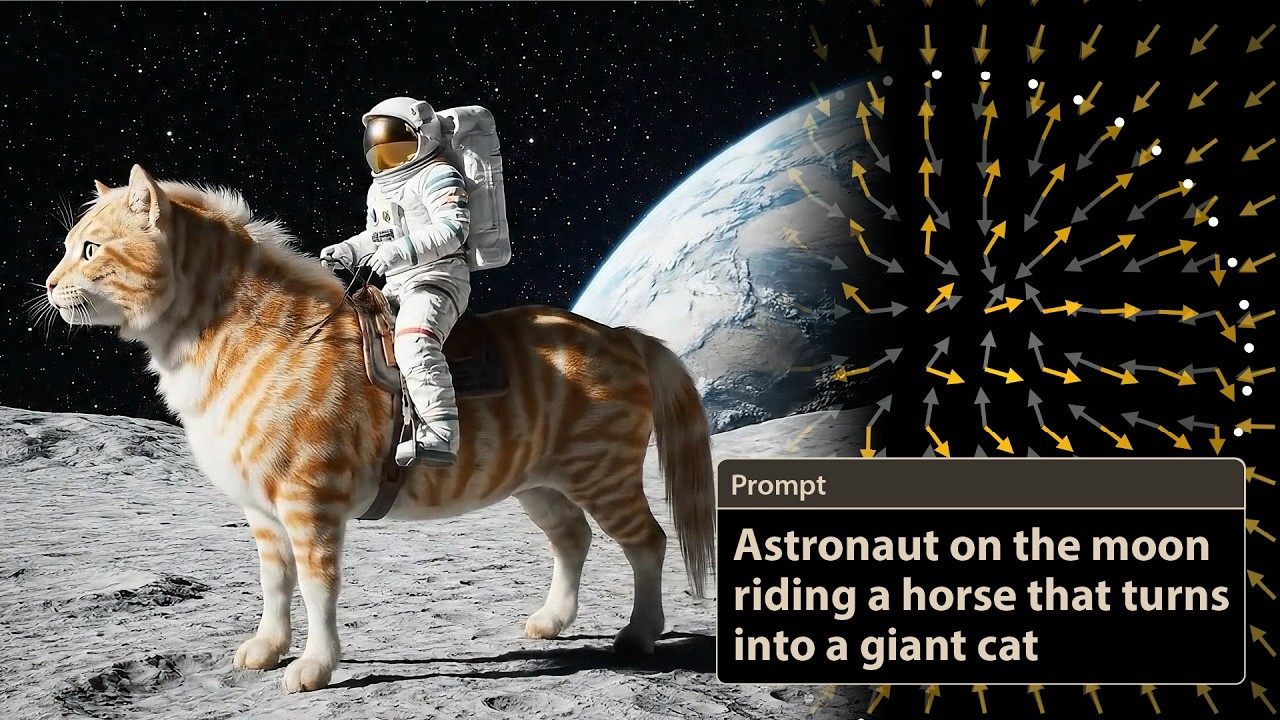The video explains how AI-generated videos use diffusion models that iteratively transform noise into coherent visuals by reversing a noise-adding process, guided by shared text-image embeddings from models like OpenAI’s CLIP. It highlights advanced techniques such as classifier-free guidance and negative prompts that enhance control and quality, illustrating the deep connection between these models and concepts from physics like Brownian motion.
The video explores how modern AI systems generate videos from text prompts, focusing on diffusion models and their deep connection to physics, particularly Brownian motion. Diffusion models start with pure noise and iteratively refine it into coherent images or videos using a transformer-based neural network. This process is akin to running Brownian motion backward in a high-dimensional space, allowing the model to gradually shape noise into realistic visuals. The video uses an open-source model called WAN 2.1 to demonstrate how prompts influence video generation, highlighting the underlying mechanism where noise is progressively reduced through multiple iterations.
A key component enabling text-to-image and video generation is OpenAI’s CLIP model, which learns a shared embedding space for images and text. CLIP consists of two encoders—one for images and one for text—that map inputs into a 512-dimensional vector space where related images and captions are closely aligned. This shared space allows the model to understand and manipulate concepts mathematically, such as identifying the difference between images with and without a hat. However, CLIP alone cannot generate images; it only provides a powerful way to represent and compare text and images in a common space.
Diffusion models, introduced in 2020 by Berkeley researchers, work by learning to reverse a noise-adding process applied to images. Instead of denoising step-by-step, the model predicts the total noise added to an image, effectively learning a vector field that points back to the original data distribution. This vector field guides the reverse diffusion process, which includes adding noise at each step during generation to avoid blurry, averaged outputs. The video uses a 2D spiral analogy to visualize how diffusion models learn to navigate high-dimensional image spaces, showing that adding noise during generation helps maintain diversity and sharpness in the outputs.
Advancements like DDIM and flow matching have improved diffusion model efficiency by reducing the need for random noise during generation, enabling faster and deterministic image synthesis. To steer generation towards specific prompts, models condition the diffusion process on text embeddings from CLIP or similar encoders. However, conditioning alone is insufficient for precise control. Classifier-free guidance, which combines outputs from conditioned and unconditioned models, amplifies the direction towards the desired concept, significantly improving prompt adherence. WAN’s video model extends this by using negative prompts to steer generation away from unwanted features, enhancing video quality and coherence.
The video concludes by reflecting on the remarkable integration of these components—shared embeddings, diffusion processes, and guidance techniques—that enable AI to generate highly detailed and diverse images and videos from language alone. Despite the complexity, the underlying principles can be understood through geometric intuitions in high-dimensional spaces. The presenter also shares personal thoughts on the mystery of how these models find relevant submanifolds in vast data spaces, enabling novel compositions unseen in training data. The video is a guest presentation by Stephen Welch of Welch Labs, praised for its clarity and depth in explaining these cutting-edge AI concepts.
